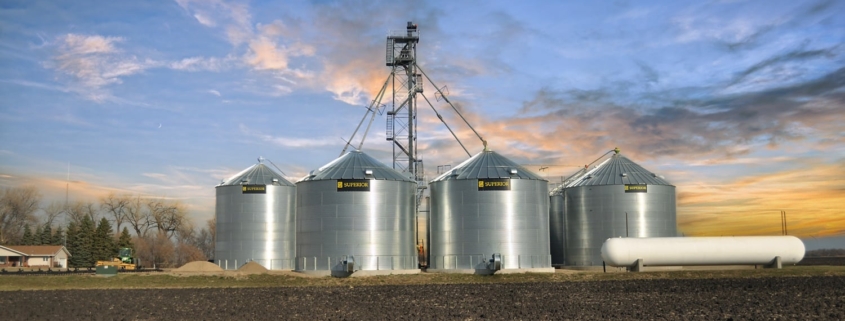Grain Safety Shorts: Bin Prep
Agricultural confined-space related cases of injuries and fatalities saw a dramatic rise in 2022, including grain entrapment cases which rose nearly 45%, based on Purdue University’s annual report. Iowa had more cases of grain entrapment than any other state at 9 total in 2022. Nearly all of these cases involved grain flow issues due to grain spoilage, which means that improved grain management could prevent cases in the future. This fall and winter we will be doing a series of short articles that aim to provide useful information to help farmers keep their grain in good condition and keep them and their families safe around grain. This is the first of the series.
Bin Prep
Get your grain bins ready BEFORE the rush of harvest. These to-do list tasks aren’t fun, but they will help minimize grain spoilage from insect and mold activity and moisture entry. Start with a clean bin, exterior bin perimeter, and handling equipment by removing potential food sources for pests, including residual grain, broken kernels, fines, foreign material, dusts, and molds. Before cleaning out old grain, be sure you have on your NIOSH-approved respirator that is certified for grain dusts, and that it fits your face to fully seal and protect you.
- Sweep the bin walls and floor, making sure to clean the tops of doors, inside hollow pipes or ladders, and inside of augers.
- Trim down vegetation, remove grain material and debris, and consider using a rodenticide around the bin’s outer perimeter.
- Clean out dust and debris from harvesting and handling equipment, like combines, trucks, wagons, augers, and in grain legs and elevators.
- While the bin is empty, check mechanical parts and conduct needed maintenance, seal gaps or cracks along the bin, and check the roof for potential spots that could leak, especially around the vents or access doors.
- If fines or Indian meal moth silks are starting to plug up the space below the floor, it is time to remove the floor to vacuum or power wash.
- If the aeration floor can’t be removed, fumigation is the best option to eliminate carryover insects.
- Check that ladders are in good condition and consider upgrading them with cages or replacing with staircases.
- Assemble your safety equipment for your grain storage facility, like respirators, life harnesses, and lock-out tag-out kits for unloading equipment.
- Ensure that all bin entry points have clear warning labels so that all are aware of the hazards. Also be sure that kids can’t enter bins and that they know of the hazards when they live or spend time around stored grain.
Additional Resources:
Summary of Grain Entrapments (purdue.edu)
Time to get your grain bins ready for harvest | Integrated Crop Management (iastate.edu)
Article provided by Iowa State University.







Leave a Reply
Want to join the discussion?Feel free to contribute!